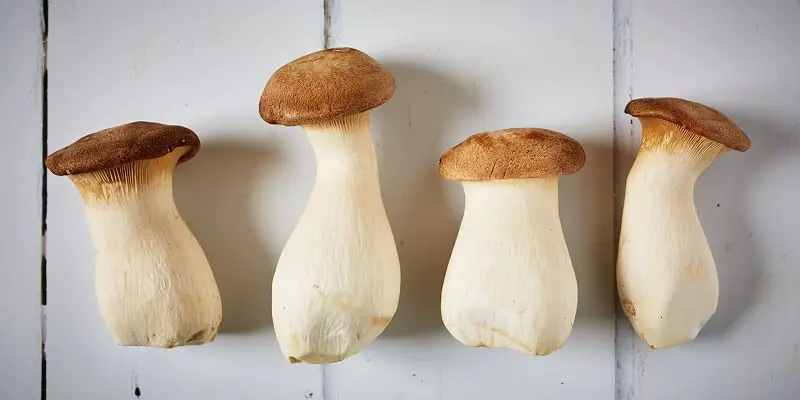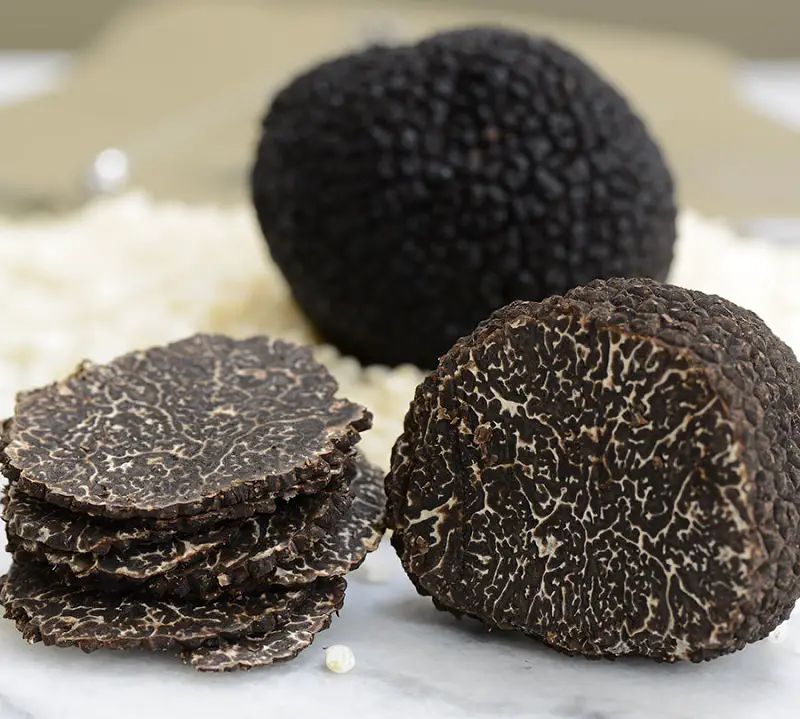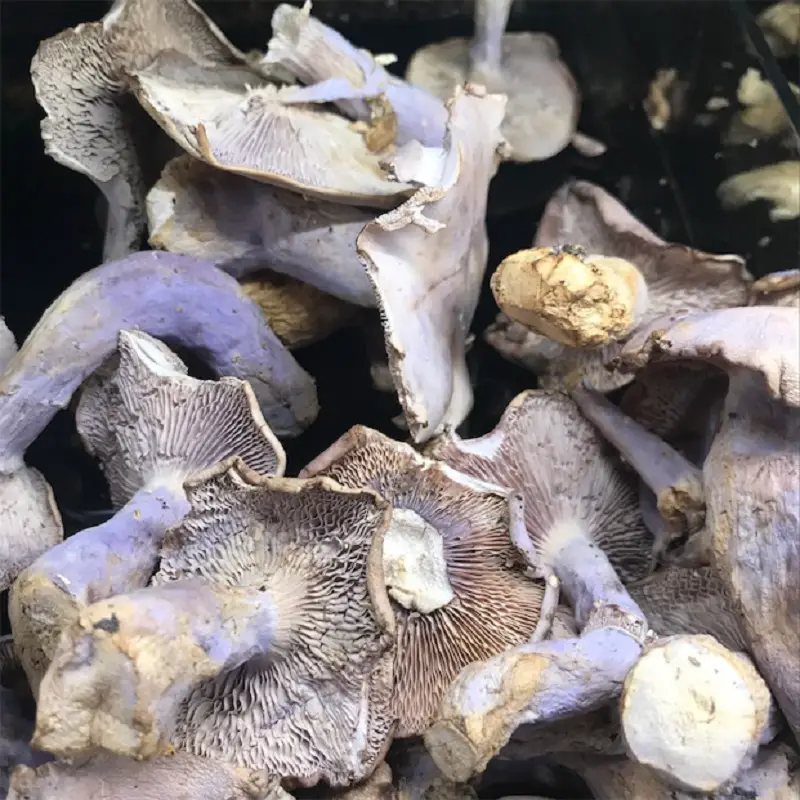The mushroom season is beginning and there are already many forests where mycology fans wander among trees and bushes in search of these little gastronomic treasures. In this list we collect the 10 most appreciated mushrooms from a gastronomic point of view. We remember that to consume them it is necessary to have extensive knowledge about them, since many of them are easily confused with other toxic and even deadly species.
Saffron Milk Cap – Lactarius Deliciosus

It is one of the most popular mushrooms in our pine forests. It can reach 15 centimeters in diameter. It is fleshy and orange in color with darker concentric reddish brown betas. It is first convex, then flattened, and finally depressed, forming a large cup. The blades are orange in color that turn green when they fade. The meat is compact, aromatic, brittle, with a saffron color that turns carrot-colored. In the fractures or cuts, it exudes a bright orange milk, which progressively turns to a purple-brown and later to green in contact with the air. It is one of the most sought after edible mushrooms for its firm, brittle flesh that exudes a pleasant fruity scent. Its most notable characteristic is its orange-colored, almost fluorescent sage or milk. Considering this characteristic, practically any confusion with other inedible lactarius is excluded, since all those that secrete this orange-colored milk are of culinary interest. When they are collected, it is enough to cut a slice on the foot to observe that a ring of that unmistakable intense orange colored milk appears in the area of the cut.
Blue Foot Mushroom – Lepista Nuda
Fleshy, large, it can reach 15 cm., Although the normal is between 6 and 10 cm. The color violet. It turns to brown, losing all its purplish color when they are very old. At first it is convex, then flat. Sometimes it has a large central mamelon. Its blades are tight and thin, unevenly distributed and trimmed near the foot. Its color, between lilac and bluish, disappears with age. The foot reaches between 4 and 9 centimeters in height, quite robust and cylindrical. Its flesh is fragile and tender and is also impregnated with a bluish hue, but pales with the passage of time. They sprout in coniferous and flatwood forests and on very humus-rich soils and it is common to see them emerge between a carpet of dead leaves, or between a bed of needles. It often forms numerous colonies and even circles. It is an excellent edible appreciated for its tender and fragrant meat. Its flavor, very aromatic, is not appreciated by everyone, so it is necessary to blanch it before cooking and boil it for at least 20 minutes. This mushroom is ideal for frying. Do not consume raw, as it is toxic. Given its characteristics and its violet color, it is difficult to confuse it with poisonous species, since any similar mushroom will be edible. Very unlikely it is also to be confused with some non-edible cortinarius.
King Trumpet Mushroom – Pleurotus Eryngii

The classic thistle mushroom can be found in any supermarket in our country. Measuring 4 to 10 centimeters in diameter and convex in shape, this mushroom is dense and fleshy, with a rolled margin. It is light brown to dark brown in color. The cuticle is dry, smooth and shiny in wet weather. Its flesh is firm, whitish and slightly flexible, from which it emanates a sweet fungus perfume, although its smell and flavor is little marked when raw. It is a very good edible mushroom, with a mild, delicate flavor and a fine and pleasant texture, sometimes quite difficult to locate, despite its significant size. Due to its firmness, it requires a longer cooking time. It can be dried and preserved Although it is difficult to confuse it, it is difficult to confuse it, but caution must be exercised with some toxic Clitocybes, clearer cuticle, central foot, less decurrent blades and very different smell.
Field Mushroom – Agaricus Campester
The wild mushroom is another of the most common mushrooms in our country. The cultivated one – not the wild one – is the one we usually find in supermarkets. Its shape is globular and measures between 5 and 15 centimeters in diameter, always fleshy at the level of the margin, which remains folded for a long time. Its blades are tight, uneven, free, they are first of a pale pink color, of a flesh pink then that turns to brown with age and finally black in the oldest specimens. The flesh of these mushrooms is firm, dense, white, has a slight pink color in the fractures and exudes a soft fruity perfume. It is an excellent edible appreciated for its fine aroma, its pleasant meat and its great variety of uses. They should be thoroughly inspected for parasitization and only in the case of large specimens should the dark laminae and cuticle be removed. When cleaning the small ones, check that their sheets are pink. Preparation time is 5 to 8 minutes. It can be confused with Agaricus Xanthoderma which is slightly toxic. In addition to the smell, it is distinguished because the poisonous one has a yellow coloration when we rub it lightly with the finger, especially on the foot. Take special care with young specimens in which the plates do not yet have a well-defined pink color.
Black Truffle – Tuber Melanosporum

This fungus resembles a small tuber of about 5 centimeters, although specimens of 10 centimeters in diameter have been seen. The outer area is covered by a multitude of 6-sided pyramidal warts with the upper part somewhat depressed and of a dark brown color, initially reddish black almost. The internal part or “gleba” is white in the most immature specimens and a purplish black when they have finished their maturation period. Inside we can see numerous fine, white veins with many branches that turn red in the air if the nose is ripe. If the truffle freezes, these veins disappear. It is a fungus that grows underground, near the roots of robels, although it is sometimes also associated with other trees such as quercus, poplars, willows, hazelnuts, linden trees, or even pines. They are found near holm oaks, gall oaks and hazelnuts. Ripens in winter, from December to March. The Truffle has a great gastronomic reputation worldwide. It is an excellent edible with tender meat that releases a very aromatic perfume. They can be used in the kitchen raw or cooked, sliced, sliced or diced


